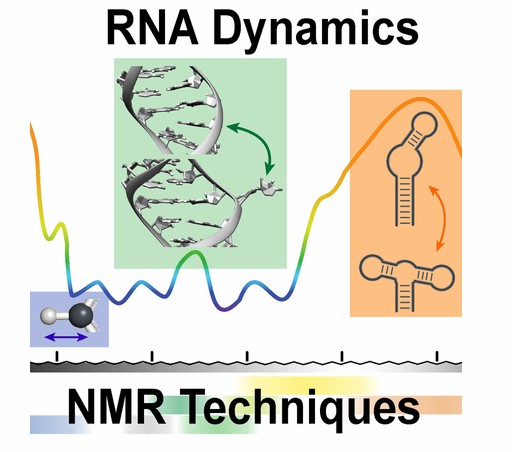Analysis of RNA Structure and Dynamics
More and more functional RNA needs to have a deep understanding of their mechanisms. The function of RNA depends on the changes in its structure, which is called dynamics. In order to reveal dynamic processes and higher energy structures, new NMR methods have been developed to elucidate these dynamics in RNA at atomic resolution.
 Figure 1. Analysis of RNA structure and dynamics (Marušič M et al., 2019)
Figure 1. Analysis of RNA structure and dynamics (Marušič M et al., 2019)
As an expert in the field of nuclear magnetic resonance, Creative Biostructure provides customers with RNA structure and dynamics analysis services based on NMR technology. We provide one-stop services including RNA sequence design, sample preparation, NMR measurement and analysis, and structure calculation.
Design of RNA Sequences
Since RNA consists of only four nucleotides, it is always necessary to overcome signal overlap. Therefore, we usually design shorter RNA fragments for NMR analysis. In many cases of stable isotope labeling, in vitro transcription using T7 RNA polymerase is used. For larger RNAs, it may be necessary to divide them into several parts to distribute NMR signals and obtain structural constraints.
Sample Preparation
To prepare a large number of RNA samples for NMR, we usually use two methods, chemical synthesis and enzymatic synthesis (in vitro transcription). Chemical synthesis can be used to prepare short RNA (less than 30 nucleotides), while in vitro transcription is suitable for long RNA. In addition, chemical synthesis can be used for site-specific labeling of stable isotopes. In vitro transcription can be used for uniform labeling or nucleotide-specific labeling.
| Step | Description |
| In Vitro transcription | T7 RNA polymerase based in vitro transcription system is mainly used for the preparation of NMR samples. |
| Chemical synthesis | The process is fully automated using a DNA/RNA synthesizer, and purified RNA with the required sequence can be purchased from commercial companies. By using the [13C / 15N] phosphoramide structural unit, the labeled residues can be incorporated into specific positions of the RNA sequence. |
| Enzymatic ligation | To integrate labeled or modified nucleotides into RNA fragments at specific locations in the sequence, an enzymatic linkage using T4 RNA ligase can be used. |
| Artificial base pair system | An artificial base pair system is an alternative method to incorporate modified nucleotides into RNA fragments at specific positions in the sequence. |
| Stable isotopic labeling | Since the proton signals of RNA are usually overlapped, stable isotope markers are needed to separate the overlapped signals. Using commercially available 13C and 15N labeled NTPs, stable-isotope labeled RNA can be synthesized by using an in vitro transcription system. |
| Purification | PAGE, gel filtration chromatography. |
Measurements Service
- NMR measurement of exchangeable protons.
- NMR measurement of non-exchangeable protons.
- Residual dipole coupling. The information obtained from residual dipole coupling (RDC) can be used to optimize the overall structure.
- The paramagnetic relaxation is enhanced. Paramagnetic relaxation enhancement (PRE) is very important for obtaining remote structural information.
- Relaxed dispersion. CPMG relaxation dispersion (RD), which can analyze millisecond molecular motion, is widely used to elucidate the dynamics of biomolecules.
Creative Biostructure is committed to providing high-quality NMR analysis services to advance the life sciences fields. If you have any questions or needs, please contact us and our customer service staff will help you the first time.
Ordering Process
Reference
- Marušič M, et al. RNA dynamics by NMR spectroscopy. ChemBioChem. 2019. 20(21): 2685-2710.

